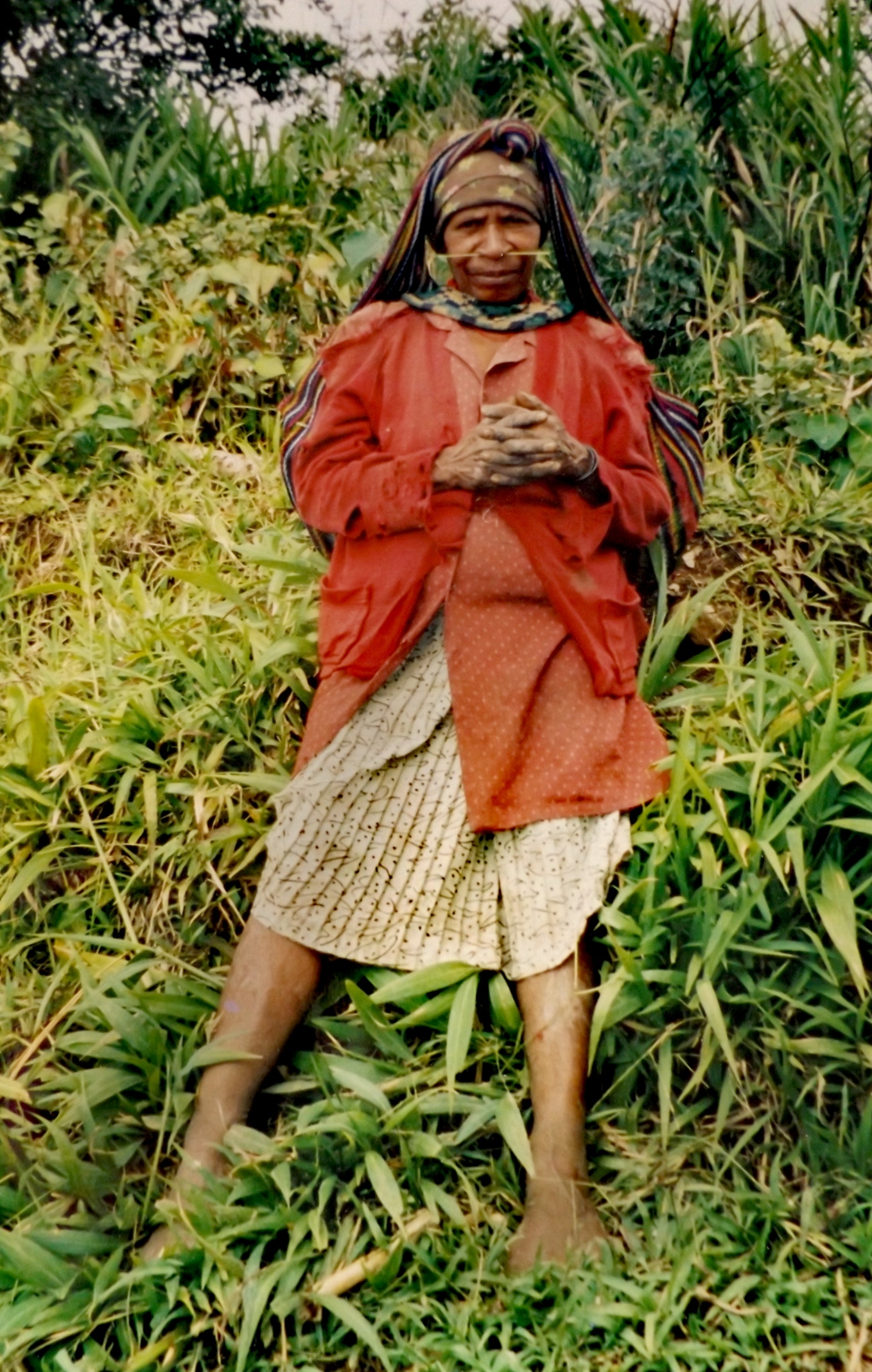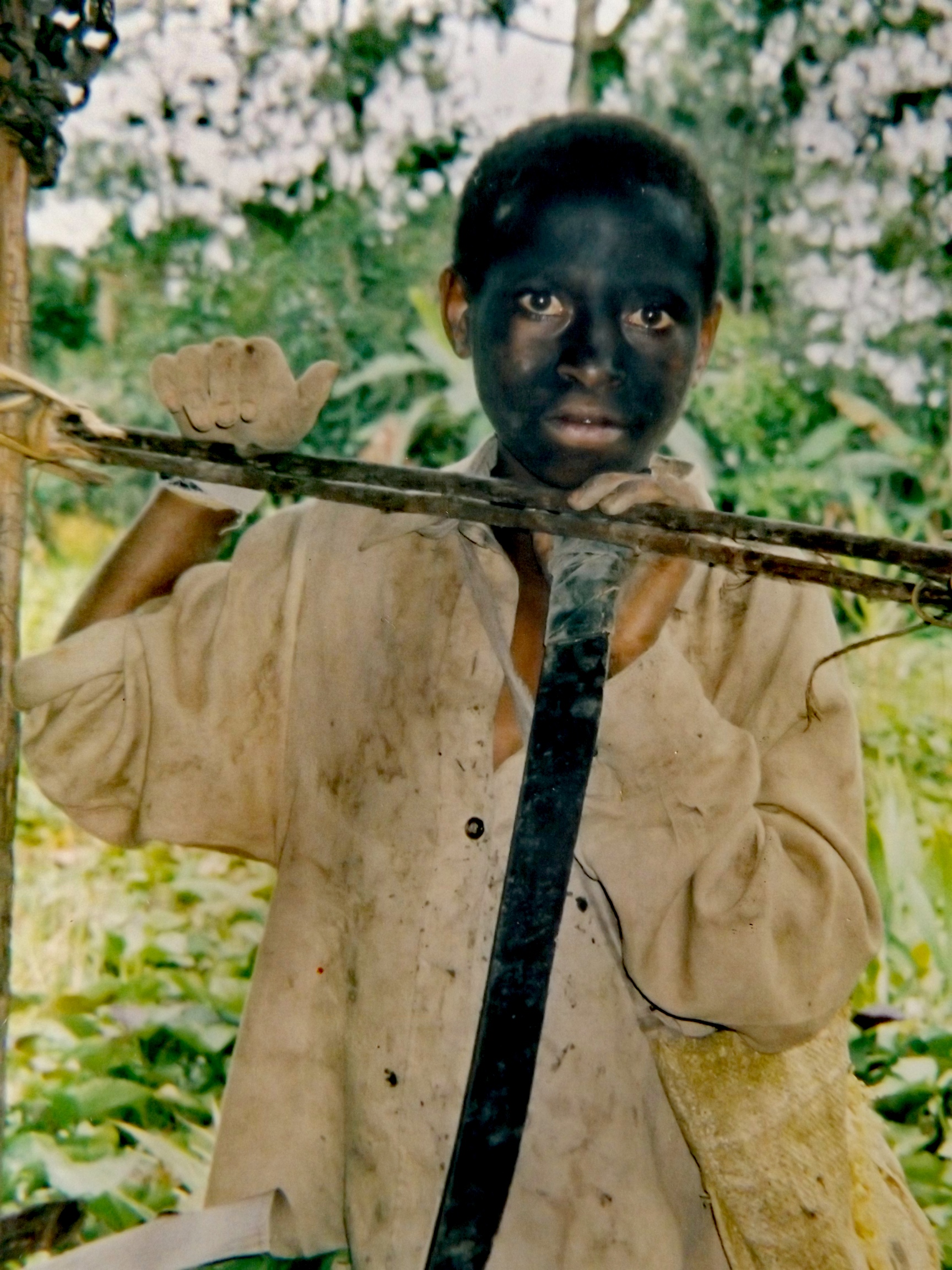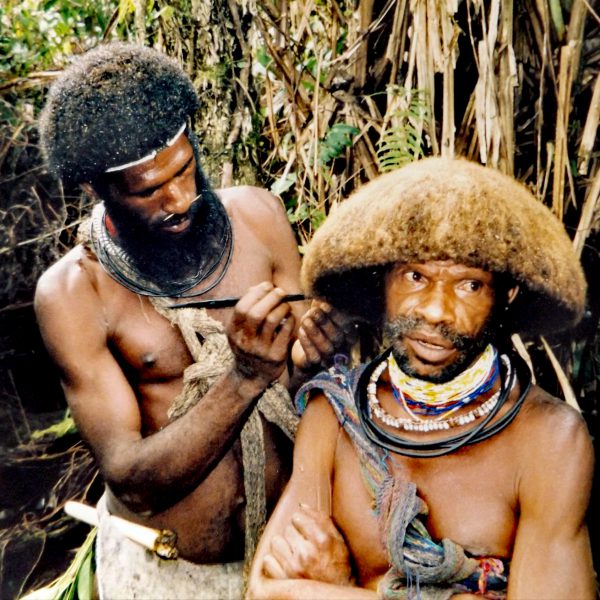Backpacking in Papua New Guineau – Meeting the Huli Wigmen
Backpacking in Papua New Guinea
Papua New Guinea is the craziest place I’ve visited. There are 750 tribes who speak 700 languages. This is the story of one of the tribes I stayed with, the Huli Wigmen. I’d found a man called Michael who was trying to set up a tour guiding company, I was to be his guinea pig.
Arriving in Papua New Guinea
I arrived on the landing strip in Tari which was a field. The reception committee was amazing, there were people everywhere, masses of them, mostly in local costumes of all colors and styles and with wildly decorated hair and reeds through their noses, it is just as I expected Papua New Guinea to be. There were also people in Western dress, everyone looked different, a mass of colour. Luckily Michael was there to meet me and guide me through the throng, everyone wanted to shake my hand. He introduced me to the local magistrate. He wore local clothes, no shirt, native necklaces, a kind of tree bark skirt/covering and a goucho hat. He had a medal round his neck with magistrate on it. Some of the headdresses were so ornate with wigs, feathers, grass, leaves and flowers. Some faces and beards were painted with clay making them orange.
Trouble Up the Road
There had been a little trouble further up the road. A woman had committed suicide. This had caused some tribal tensions. We had to wait over 2 hours to get a lift to where we were going in a police vehicle with 2 policemen with sub-machine guns. They were going to calm down the situation and alleviate tensions. As we got closer to the spot the road was full of people in tribal dress. We then passed what had once been the house and shop of the husband of the suicide victim. It was still smouldering away, having just been burnt down. The police dropped us off at the guide’s home, we would be setting off on our trek to the Villages the following day. The police were going back to try to calm things down. We had a short hike to a nearby waterfall, the torrential rain made me doubly wet.
Bride Money
It had rained all night and was still raining when I woke up. We had luck though, just as we were starting our trek the rain stopped and the sky cleared. It was a long, muddy hike to the village but the wealth of people we met en-route more than compensated for this. We now had the full story of the suicide. The husband had allegedly not paid enough bride money, this normally consists of a certain amount of pigs and sometimes some kina(money). The 2 had had a big row and the wife ran off and got some rope, went back to her village and hung herself from a tree. Some of the boys had gone looking for her, cut her down and tried to revive her, but it was too late.Accusations
There were some accusations that she may have been murdered. Some compensation had been paid but the bride’s clan/tribe wanted revenge and burned down the husband’s house and shop. There was then talk that that people from the husband’s village were coming to attack the wife’s village, which happened to be the next village to where we were staying. We passed people today with bows and arrows, machetes and home made guns, ready for the fight. There was no tension though everyone was happy and smiling. Everyone I passed today just wanted to shake my hand. Many villagers still wear traditional dress, so colourful and individual. They loved having their photos taken and came flocking when the camera came out.
Never Seen a White Person
Many people here have never seen a white person before, it felt strange being the first white person someone has seen. 2 old men took one look at me and jumped out of the way in fright. They thought I was their ancestor who’d come back from the forest to haunt them! I came to look at these people but they spent more time looking at me – at times in absolute amazement. The biggest tourist attraction here was me. The children were also so excited to see me. I must have shook hands with over 150 people. I’d say half the people here still wear traditional clothes and follow the old traditions. There are a few, mainly younger who have gone to school, wear more Western clothes and speak a little English. Everyone was so friendly, it was incredible.
Meeting the Huli Widows
I also met the Huli widows. They were the wife, sisters and daughter of the dead man, who actually died several years ago. He had been murdered by another clan. In retaliation her clan/relatives murdered 2 members of the other clan. However, they are still not satisfied and want more revenge. The tradition here is to keep the bones in a wooden box on top of a pole near to the house. This keeps him alive and his spirit can come back to visit. The mourning process was nearly over for one of the sisters. They wear special necklaces which they remove one each year. When all the necklaces have been removed they can stop mourning.A Widow Covered in Mud
The widow herself was completely covered in mud. This was a disguise so that she looked different from when her husband was alive. It is her choice when to come out of mourning or if to re-marry. With Steven translating they asked me about our customs for death and mourning. When I told them about our burials and cremations they were, horrified. That said we don’t have any respect for our dead. There are many customs around death in PNG. In Milne Bay they used to bury their dead up to their necks. When all the flesh had rotted away from the skull they dug up the bones and put them in caves. Into these caves were also placed the bones of the people they ate.
Hulis and Cannibalism
The Hulis were never cannibals; most though still live traditionally. Men and women live separately, in separate houses. Normally the men cook for themselves, as do the women. The women spend most of their day tending the pigs and crops, mainly sweet potato, pit-pit and bananas. Women are considered ‘different human beings’ and definitely inferior to men. Polygamy is also practiced. A lot of Hulis go to church and believe in God, yet still believe in their culture, traditions and beliefs and don’t see how the 2 contradict each other.Stephen’s Village
When we got to Stephen’s village where we would be staying, we found that everyone had fled. Fearing an attack they’d left for the safety of a village farther up in the hills. Stephen’s mother had stayed to welcome us. She was a lovely old lady with a face full of character. Stephen’s wife brought us provision then both women returned to the safety of the other village. Stephen sent one of his boys to the village where the shop burnt down to access the situation. Tonight the boys prepared a ‘Mumu’ for me. We were the only ones in the village. First they heated stones on a fire of broken logs, then they dug a hole and filled it with banana leaves on top of this went the hot stones and then the food to be cooked. There were lots of fresh vegetables, sweet potato, pit-pit, pumpkin and lots I can’t remember the name for. Water is then poured over them to create steam. The tops of the banana leaves folded down to keep in the steam and cover the ingredients. Mud is then piled up on top of this. It tasted great.
The Huli Wigmen Batchelor Boys
The next day I was going to meet the Huli Batchelor Boys. This was a great honour as women are not allowed to see or have any contact with them. There had to be a special meeting to grant dispensation for me to meet them. The Batchelor Boys also had to be sprinkled with special water and have spells cast over them so I didn’t contaminate them. I’ve never been classed as unclean before.Hair Traditions
They grow their hair and then cut it off to make ornate wigs. They sprinkle their hair with a type of moss which changes the colour. They go to a kind of wig making school where the art is taught by elders who have made a vow to never marry or have contact with women. A frame is put under the hair so it grows in the correct shape. They sleep with a log under their necks so as not to flatten their hair. They use a 1 pronged comb to comb each other’s hair, it is a long process.Dress
Their dress is a skirt covering the front made from tree bark and a covering of long leaves at the back. They wore reds through their nose. They have a Cassowary bone carved into a knife tucked into their belt. Their faces are adorned with red clay. Myself and Stephen also had to put some of the clay on our faces as a sign of respect. The wigs can take up to 16 months to grow and they can grow as many wigs as they want. Most have at least 3, one for everyday use and for ceremonies and special occasions like ‘Sing Sings’.Bird of Paradise Flowers
The finished wigs are decorated with Bird of Paradise flowers, red being the best and forming the centre piece with other feathers round the side and everlasting flowers. The Batchelor Boys are free to leave at any time. Some will remain Batchelor Boys until they die and they teach the new inductees. Other men don’t become Batchelor Boys and wig makers but still wear traditional dress and adorn their heads with leaves and ferns which they also use to clean their beards. It was fascinating, a world as far removed from my own as possible. I felt privileged to have had the experience.
Huli Wigmen Elders Meeting
The good news was that with an elders meeting and the exchange of more pigs the situation had calmed down. The villagers returned. The children were so excited to see me . Stephen’s son and some of the local boys took me on a hike. It turned out to be quite an adventure. We bumped into Luke, an old man from a neighbouring village. He took me to a place where he held up half a skull and a thigh bone, from ‘fighting a long time ago’. He then took us to his village. The whole village came out, everyone was so excited, they had not seen a white person before. Everyone wanted to stand next to me, shake me by the hand or touch me. A little overwhelming.Continuing the Trek
We continued the trek. The young guides, by now lots of them, carved out a path with machetes, made steps with wood, put rocks down to cross streams and held my hand down slippery slopes. It was very adventurous and a lot of fun, the kids were loving it even more. We trekked back to our village and I dried my feet by the fire. As, mothers came to collect their children, they screamed and cried, they wanted to stay with me. I said a sad goodbye to the village.My Final Stay
My last stay was at a small lodge, a small beautiful spot run by 4 brothers. Even better they had cold beer. They don’t get any tourists. On top of the mountain is the luxury Ambia Lodge owned by an Australian. They charged 300 dollars a night but paid their staff a pittance 25 kina a week – £5. They get their staff to dress up in traditional clothes and perform ceremonial dances. They have a lot of guests Japanese, Americans and Australians. The biggest problem with the foreign investments here is that the locals don’t get the benefits. This is true of the gas pipeline, gold mine and tuna fishing, they have no benefits to the local villages, so resentments arise. In Tari the locals cut down the pylons. It costs the gas company thousands to re-build them. Then they are cut down again. It would be easier if they just had discussions with locals and landowners. I am glad I travelled the way I did, the experiences I had were incredible and I got a chance to give something back to the locals. It was time to leave on the next stage of my adventure.My Last Goodbyes with the Huli Wigmen
The plane was 6 hours late. There is just a field, no terminal building or departure lounge. A man writes your name on a piece of paper, when the plane arrives you get on and someone counts the number of passengers. Fortunately it is market day, when everyone comes to town, it was very colourful. 2 of the brothers from the guest house showed me round. There were lots of Huli wigmen in their wonderful wigs. Again everyone wanted to shake my hand and ask me questions. I’ll never had an experience like this again.

